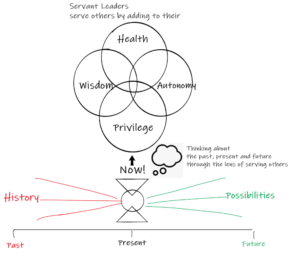Servant Leadership – where does it come from and where is it meant to go?
“The servant-leader is servant first, it begins with a natural feeling that one wants to serve, to
serve first, as opposed to wanting power, influence, fame, or wealth.” – Robert K. Greenleaf
You’ve probably heard of it already
What’s Servant Leadership? As a concept, it’s getting popular now, dare I say, going
mainstream thanks to the popularisation of the Scrum Agile framework. There’s a role in this
framework called “Scrum Master”, meant to be a master of ceremonies and, very
importantly, a Servant Leader for their team. Thanks to this, the concept has become a bit
of a household name.
Older than most people think
But if we look at it’s origins, this has actually been around for a long time, since 1970 when
Robert K. Greenleaf, with a background as a HR executive at AT&T, published his essay
titled, “The Servant as Leader”. He then started his own consultancy based on this premise
and authored some books. Since then people have come up with scales to measure how
much of a servant leader someone is or can be. I think that’s fine but it doesn’t work for me.
I’m a First Principles kind of guy so I went back to Robert Greenleaf’s original essay. He was
inspired by Herman Hesse’s novella “Journey to the east” in which the main character, an
avatar for the author, goes on a mystic journey with a group. They’re served by a man
named Leo who keeps the whole group together, cooks for them and sings for them. They
don’t think much of him but when he suddenly leaves, the whole band can’t survive without
him and they fall apart. Later it turns out Leo was the head of the “Order” that the group were
seeking. So Leo turns out to be a Servant Leader of the highest order (pun intended).
Greenleaf was also inspired by the commencement address of a 22 year old Hillary Rodham
(who would later go on to become world famous as Hilary Clinton). The young Hillary spoke
about the liberation of the human capacity to fulfill its potential. Finally the term Servant
Leader was inspired by King Frederick II of Prussia who labelled himself “the first servant of
the state”. These things all came together in Greenleaf’s essay.
Why be a Servant first?
Robert Geenleaf preferred to have those people in leadership roles who came with an
intention to serve others. Not those who wanted to lead others for the sake of becoming
leaders. It was an important distinction for him and one that’s easily observable by those
working for a leader but perhaps not so much for the leader. The premise is that a Servant
Leader is more likely to do the correct thing, uphold values and stay on course with the
stated purpose of their enterprise than one who sees them self as a leader but not as a
servant. There is a bit of irony in here for me. Had Greenleaf grown up in Pakistan like I did,
he would never have used the term Servant Leader. In a country where domestic servants
abound and a stigma is associated with servitude, no one is likely to elevate the term
“servant” to a platform worthy of respect. Having said that, this stigma isn’t present in most
WEIRD societies (Western, Educated, Industrialised, Rich and Democratic) and I hope it
proliferates more globally overtime because it’s a very useful concept and in the current
COVID era, where the need for empathic leaders has skyrocketed, it’s much needed.
The essence of good Leadership
Greenleaf also wrote about how leaders have to play three roles all the time. That of
Historians; knowing what happened in the past, Contemporary Analysts; fully aware of what
was happening in the now (in a slightly Ekhart Tolle-sk way) and Prophet; visionaries who
could see where the future was heading. He was adamant that leaders look after those who
are underprivileged. In his own words, the way to identify true service leadership was by
asking: “Do those served grow as persons? Do they, while being served, become healthier,
wiser, freer, more autonomous, more likely themselves to become servants? And, what is
the effect on the least privileged in society; will they benefit, or, at least, not be further
deprived?”. These words, for me, encapsulate the essence of true Service Leadership and
this is how I visualise them.

Has Razvi.
https://au.linkedin.com/in/hasrazwi